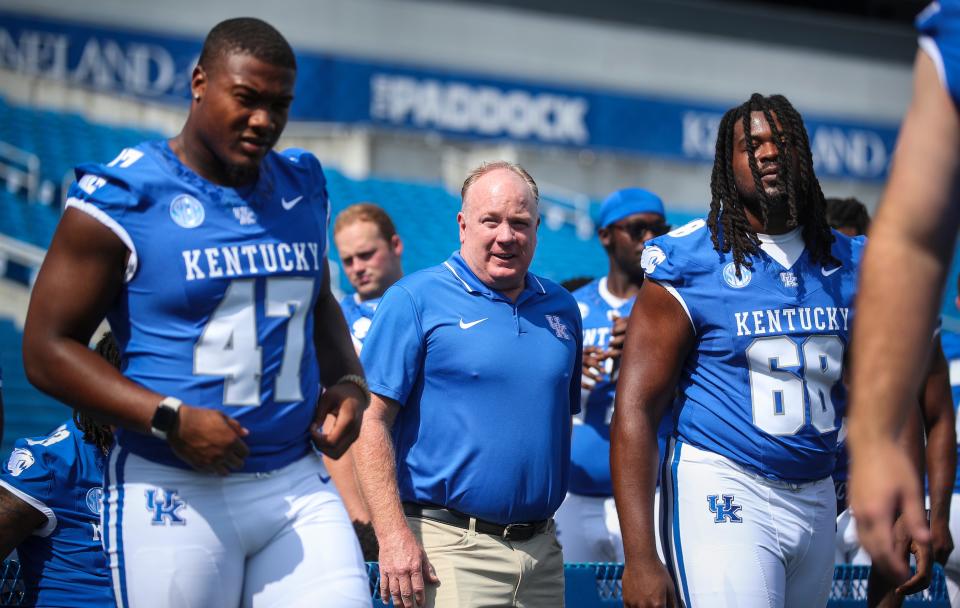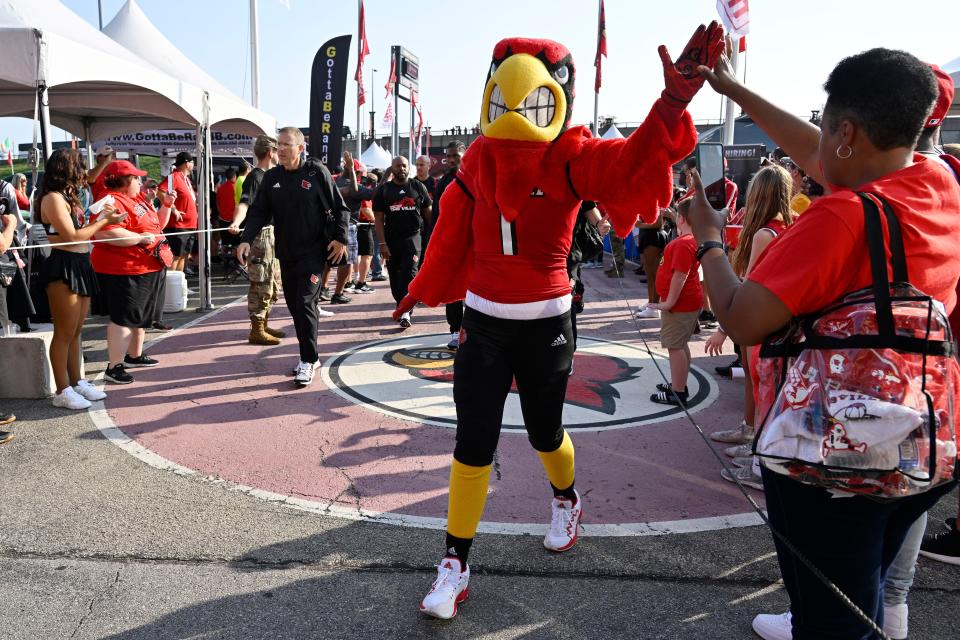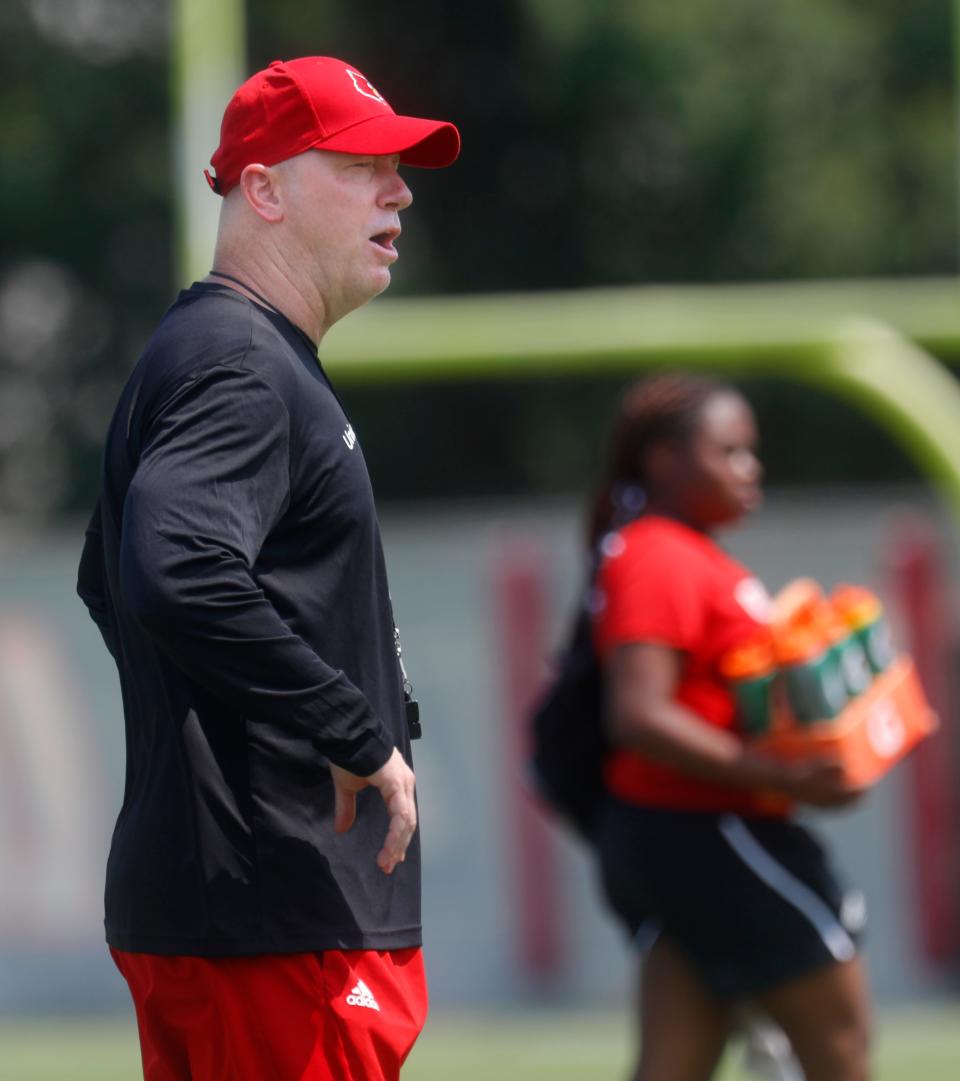Brown: U of L, UK aren’t safe as conference realignment continues to change college sports
The safety of the Southeastern Conference for Kentucky may as well be the uncertainty of the Atlantic Coast Conference for Louisville when it comes to the future of college football.
UK has enjoyed the stable shelter of the SEC over the past decade, as conferences have realigned and tortured some tradition in college football. But that safety could be at risk as soon as the current broadcast contracts run their course for both the SEC and the Big Ten, the two most powerful leagues in college athletics.
The reality is only the big brands — the ones that have perennially chased national championships over the past few decades — can really feel secure in what the future holds for college football.

It’s only a matter of time before the Darwinism of the elite programs chasing more and more revenue are directed by their television and broadcast gods to create one ultimate college league.
Why does, for instance, an Ohio State need to waste its time with Northwestern on the schedule when it could be matched up week after week with high-profile programs like USC or LSU or Texas?
Last season, four teams (Ohio State, Alabama, Michigan and Tennessee) averaged more than 4 million viewers per game, which is considered a premium benchmark for broadcast partners.
UK, which no doubt benefited from its scheduling, had three games surpass the mark: Georgia (4.48 million), Florida (4.3 million) and Tennessee (4 million).
U of L’s biggest audience came against Florida State, a game that drew 2.75 million viewers. But with half of the Cards’ regular season games on the ACC Network, they didn’t often have the platform for bigger audiences.

Schools that regularly appear on the conference-supported networks aren’t going to the Super League. The dream scenario for broadcast programmers is to have the biggest brands in college football face off every Saturday in the fall, essentially becoming the NFL-lite.
This could happen with or without football remaining part of the NCAA, too. In fact, more and more college football gate keepers have floated the idea of the sport breaking away from athletic departments and becoming more like a franchisee that pays rights fees to represent a school.
Quite possibly the decision that made it inevitable was USC and UCLA joining the Big Ten, a move that extended the league, which was built around Midwest schools but in recent years has incorporated some schools further east, from coast to coast.
The decision was made with no regard for what makes sense geographically. It only made sense for the league in two big brands joining and adding value to its broadcast rights negotiations.
That’s where this thing is all headed.
Why pretend Vanderbilt football has anything in common with Georgia or Alabama? The teams and the brands that attract national audiences will be welcomed into the Super League.
There’ll be no room for the little programs that could.
There won’t even be room for the average ones.
The weeding-out process has already begun. Just ask the remaining Pac-4 teams: Stanford, California, Washington State and Oregon State. There’s a reason the Big Ten didn’t ask them to join too after scooping up Oregon and Washington.
That means programs like UK, which was a charter member of the SEC, and Indiana, which has been affiliated with what is now known as the Big Ten since 1899, are on track to be banished to the “other” status.

U of L is currently too caught up in wondering about the long-term health of the ACC to worry about a Super League it won’t be invited to join.
There’s limited hope of it being any different, but even if the Super League is as few as 24 teams, there will be some wiggle room among the final five or so schools invited.
The only way for programs like UK and U of L to be better positioned is to win now — and win big. Recency bias has a way of erasing the past.
It was a lot easier for the ACC to accept U of L after its dream season in sports during the 2012-13 academic year. The Cards produced a Sugar Bowl win, the men’s basketball national championship, a women’s basketball Final Four appearance and the U of L baseball team made it to the College World Series.
That still might not be enough as the college football juggernaut rolls forward crushing the concepts of traditional conferences along the way.
Reach sports columnist C.L. Brown at clbrown1@gannett.com, follow him on Twitter at @CLBrownHoops and subscribe to his newsletter at profile.courier-journal.com/newsletters/cl-browns-latest to make sure you never miss one of his column.
Camp wrap up: What we learned at Louisville football fall camp – and where the Cards still have concerns
Breakout session: UK football wants to take next step in 2023. 5 games that could make or break the season
This article originally appeared on Louisville Courier Journal: Conference realignment news: Why Louisville and Kentucky aren't safe

